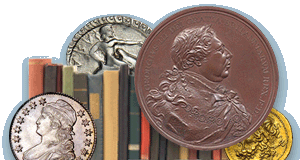
PREV ARTICLE
NEXT ARTICLE
FULL ISSUE
PREV FULL ISSUE
NO SOLUTION FOR CHANGING CENT COMPOSITIONDick Johnson submitted these thoughts on the 2014 Biennial Report to the Congress on coin modernization. Thanks. -Editor
The Treasury Department released a report last week -- its biannual report on coin analysis and production cost reduction. Two conclusions shine through language of the report:
Everybody had an opportunity to state their opinion at a hearing last April on changing the composition of American coins. Top of the list was the American Banking Association, obviously since the banking industry is so involved with coins on a daily basis. There were nine other industry trade associations that stated their positions. This included the vending machine industry, the coin laundry industry, parking industry, amusement and music operators. Seven hundred small and medium business had their say as well. It also heard from a newly organized coalition -- Don't Change Our Change. (We suspect this was formed by the lobby of the zinc industry where two major manufacturers supply the copper coated zinc blanks for the manufacture of current cent coins.) Not surprisingly, no one from a coin collecting association attended to express the position of coin collectors across the nation. While the cent is vulnerable to being eliminated, collectors of Lincoln cents are against such action. Half of other numismatists I have talked to share the same opinion. Other numismatists, they seem to be the more advanced collectors, see the merit of killing the cent coin, recalling the elimination of the half cent in 1857. A forward thinking person would recognize the cent has lost its economic value as a circulating coin and will become even more useless in the future. One writer pointed the cent today has 1/26th the value of what the Lincoln Cent was in 1909. But the writers of the report were charged with finding suitable metal compositions for our coins. They studied six possible metals:
All of these were suggested as suitable compositions for the nickel coin. Two of multiple plating were also considered for the quarter. Test criteria covered the full range of a coin's existence from metal cost, blanking, die-striking, coining, plus suitability of coins used vending machines and commerce. Each, obviously had its own characteristics. Any steel blanks, for instance, ranked low in coinability because it is so difficult to strike with normal coin relief. The final conclusion of the report was to continue studying -- trying to seek suitable compositions. It did not mention the obvious solution for the cent, which I have written about previously -- paper, plastic or elimination -- I favor elimination. Next week I will report on the coin production concepts mentioned in this report. If you can't wait you can read it at: http://www.usmint.gov/about_the_mint/PDFs/2014-rd-biennial-report.pdf Wayne Homren, Editor The Numismatic Bibliomania Society is a non-profit organization promoting numismatic literature. See our web site at coinbooks.org. To submit items for publication in The E-Sylum, write to the Editor at this address: whomren@gmail.com To subscribe go to: https://my.binhost.com/lists/listinfo/esylum All Rights Reserved. NBS Home Page Contact the NBS webmaster 
|